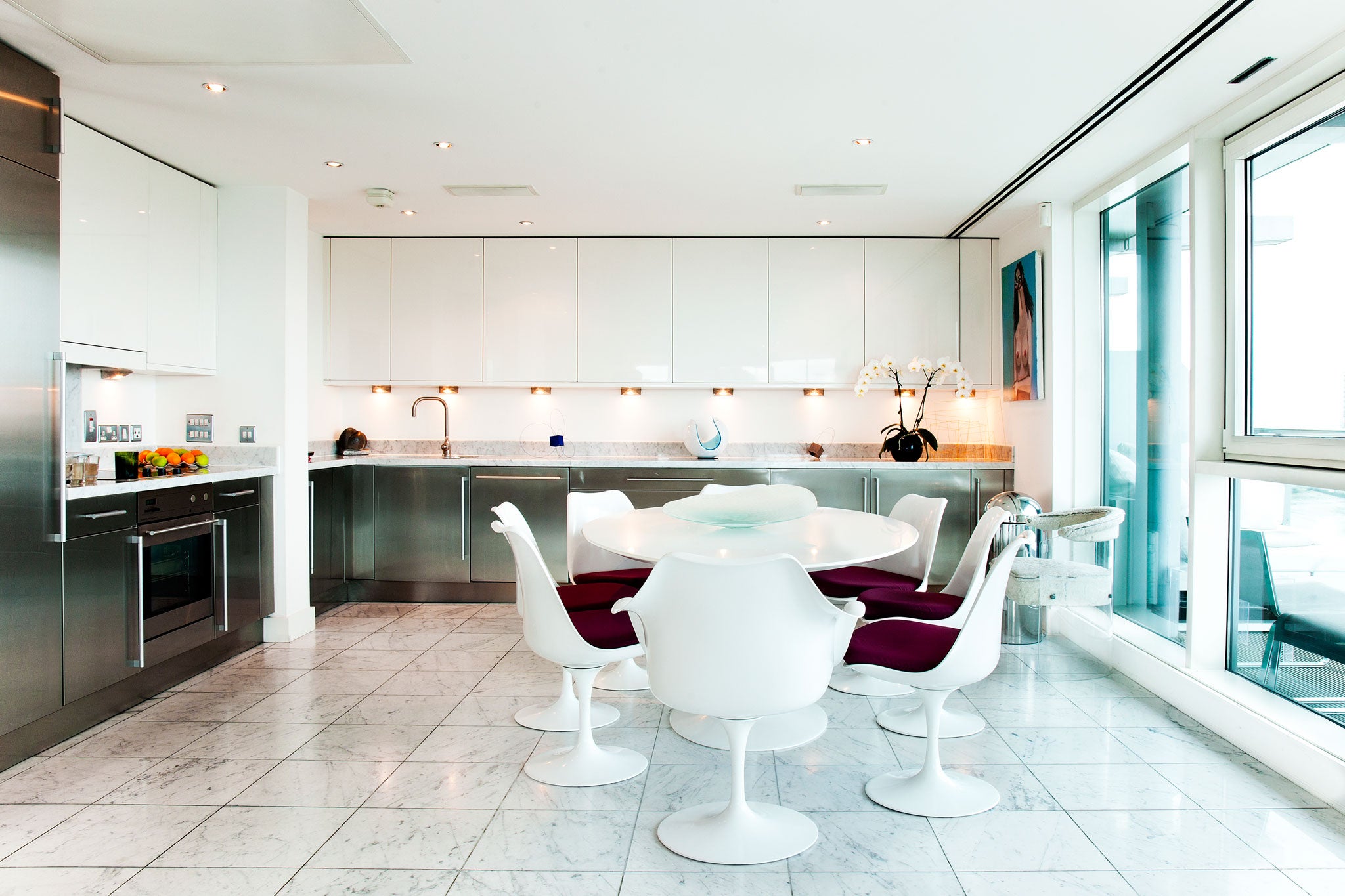The king of cool: Contemporary art has found a home at Raimund Berthold's Thames-side flat
Either the Warhols or the radiators had to go – fashion designer and contemporary-art collector Raimund Berthold never had an easier decision to make, says Holly Williams
Your support helps us to tell the story
From reproductive rights to climate change to Big Tech, The Independent is on the ground when the story is developing. Whether it's investigating the financials of Elon Musk's pro-Trump PAC or producing our latest documentary, 'The A Word', which shines a light on the American women fighting for reproductive rights, we know how important it is to parse out the facts from the messaging.
At such a critical moment in US history, we need reporters on the ground. Your donation allows us to keep sending journalists to speak to both sides of the story.
The Independent is trusted by Americans across the entire political spectrum. And unlike many other quality news outlets, we choose not to lock Americans out of our reporting and analysis with paywalls. We believe quality journalism should be available to everyone, paid for by those who can afford it.
Your support makes all the difference.Up on the 11th floor of a grand apartment building in Vauxhall, south London, men's fashion designer Raimund Berthold stands in a flat with the most perfect views, through floor-to-ceiling windows: the Houses of Parliament, St Paul's, Big Ben, the Shard…
Perhaps the panorama of the capital loses its novelty after a while, though, for Berthold has filled his flat with an impressive collection of contemporary art, with works by everyone from John Hoyland and Cindy Sherman to Andy Warhol, Louise Bourgeois to Damian Ortega, Jake and Dinos Chapman to Rob and Nick Carter.
The designer has lived with his partner Paul, a GP, in their home for 10 years, although they recently got rid of a bathroom (they had three) and removed the radiators – they're not good for the artworks.
They re-hang their collection about once a year; it's "quite a production", Berthold explains, but it also "changes the feel of the flat instantly". Some pieces, however, are pretty much assured of their place – a white Rachel Kneebone sculpture, for example: it might look organic, lightly tumbled together, with flowers and feet (and ruder body parts) sticking out of it, but it's made of weighty porcelain. "This is so heavy that it takes four people to move it," says Berthold. "I'm so scared of [breaking] it! So that hasn't moved."
Similarly, the Wolfgang Tillmans taking up a wall in their gym room will be staying put. "It's one of my favourites," Berthold begins before confessing that, "It was a nightmare to get up here. It's backed with metal and it's a really heavy frame, and it didn't fit in the lift, of course …" It took him and the delivery men an hour-and-a-half to get it up 11 flights – but it was worth it. Now, when he's working out, Berthold can choose between watching trains go past, or cycling into Tillmans' abstract world.
Some of the works he favours are unsettling; there's a queasy piece called Butchery by Ruth Dupré, made of strangely fleshy, drooping bits of glass, and a David Altmejd hair-sprouting, eerily anatomical sculpture on a stick. Not the sort of things everyone would be comfortable having around the house… does he share the same taste in art as Paul? "Oh, it definitely has to go hand-in-hand. There is no one bullying the other into buying anything."

Berthold is a particular fan of cement as a material; their coffee table is host to a couple of small concrete sculptures that speak nicely to each other. "There's a bit of a cement theme going on," he says of works by Mexican artist Damian Ortega and Isa Genzken, a particular favourite. "She used to be married to Gerhard Richter, she's a very eccentric German lady. She's very cool."
Berthold's own collections are best described as sportswear luxe, with over-sized proportions and unusual materials (he has an ongoing love affair with neoprene). But Genzken's work, specifically, has also been an inspiration: he has recently been producing concrete jewellery.
As well as just buying works he loves, Berthold approaches his art-collecting strategically, often establishing relationships with artists: "It's interesting to hear what they have to say about the art, how it should be displayed." Even more important is a rapport with certain galleries: "It's nice to get to know them, and they introduce you to new artists."
Then there are the art fairs – Frieze, which returns to London this month, usually provides rich pickings. He even has an art adviser now: "It's just to help us bring it all together and make it a collection – it's so easy to get side-tracked; you go into a gallery and like everything... she helps us be a bit more professional."
Join our commenting forum
Join thought-provoking conversations, follow other Independent readers and see their replies
Comments